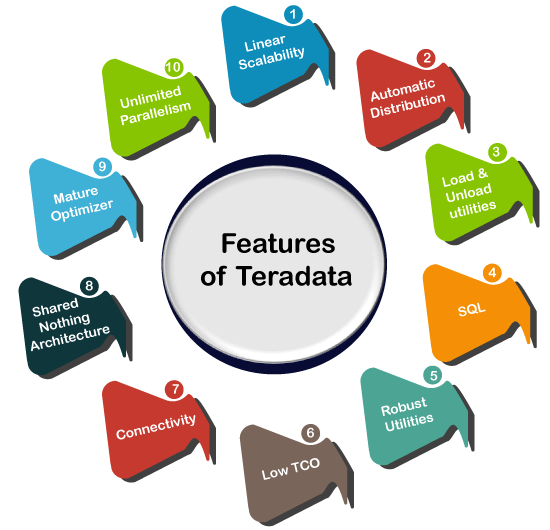
Comparing Teradata and Redshift

Understanding Teradata: The Titan of Data Warehousing
Teradata, often hailed as the “Titan of Data Warehousing,” has been a trailblazer in this field for decades. Known for its exceptional performance, scalability, and reliability, Teradata has been the preferred choice for many enterprises dealing with vast amounts of structured and unstructured data. Teradata’s architecture is built to handle complex analytical queries and deliver lightning-fast results.
Key Features of Teradata
Teradata offers a plethora of features that make it a robust data warehousing platform. Let’s explore some of its key highlights:
- Massive Parallel Processing (MPP): Teradata’s MPP architecture distributes data evenly across multiple nodes, allowing for parallel processing of queries. This dramatically improves query response times, making it ideal for organizations with large datasets.
- Advanced Analytics Capabilities: Teradata provides an extensive suite of advanced analytics functions, including statistical analysis, data mining, and machine learning. These functionalities enable businesses to extract valuable insights and make data-driven decisions.
- Scalability: Teradata’s scalable architecture allows organizations to seamlessly expand their data volumes and processing power as their business grows. This scalability ensures that your data warehousing platform remains future-proof and adaptable to evolving needs.
- Robust Security: With data breaches becoming increasingly common, Teradata prioritizes data security. It offers a comprehensive set of security features, including authentication, authorization, and access controls, ensuring that your data remains confidential and protected.
Exploring Redshift: Amazon’s Cloud-Based Data Warehouse
Redshift, powered by Amazon Web Services (AWS), has gained significant traction in the data warehousing market due to its scalability, cost-effectiveness, and seamless integration with other AWS services. It is an excellent choice for organizations looking to leverage the power of the cloud while benefiting from a fully managed data warehousing solution.
Key Features of Redshift
Let’s delve into some of the key features that make Redshift a compelling data warehousing platform:
- Scalability and Elasticity: Redshift allows you to scale your data warehouse effortlessly, adapting to changing business needs. It employs a technique called columnar storage, which improves query performance and efficiently compresses data, making it highly suitable for analytical workloads.
- Cost-Effectiveness: With its pay-as-you-go pricing model, Redshift offers a cost-effective solution for businesses of all sizes. You can easily scale your infrastructure up or down based on demand, ensuring that you only pay for the resources you need.
- Integration with AWS Ecosystem: Redshift seamlessly integrates with various other AWS services, such as S3, Glue, and Athena, enabling you to build end-to-end analytics pipelines. This integration enhances the agility and flexibility of your data analytics workflows.
- Ease of Use: Redshift’s intuitive user interface and comprehensive documentation make it accessible to users with varying levels of technical expertise. The platform offers various tools, such as the Redshift Query Editor and AWS Management Console, to simplify data management and query execution.
Taking on the Heavyweights: Comparing Teradata and Redshift
Let’s compare the two platforms head-to-head to help you make a more informed decision based on your specific business requirements.
Performance and Scalability
Teradata’s scalability is unmatched, allowing businesses to seamlessly expand their data warehousing infrastructure as their needs grow. On the other hand, Redshift’s scalability comes from its cloud-native architecture, making it highly elastic and adaptable to fluctuating workloads.
Cost Considerations
When it comes to cost-effectiveness, Redshift’s cloud-native approach offers a significant advantage. With Redshift, you pay only for the resources you consume, avoiding upfront infrastructure costs. This makes it an attractive choice for small and mid-sized businesses with tight budgets.
On the other hand, Teradata’s pricing is typically based on the size and complexity of the deployment, which may involve significant upfront costs. While Teradata’s total cost of ownership (TCO) may be higher initially, it could potentially offer better cost-efficiency in the long run for enterprises dealing with massive datasets and complex analytics requirements.
The decision between Teradata and Redshift is contingent upon your specific business requirements.
Keep in mind that the appropriate choice of a data warehousing platform has the potential to significantly impact your organization, providing the capability to extract valuable insights and maintain a competitive edge in the contemporary data-centric landscape.